- in Diet , Weight-Loss by tony
- |
- 1 comments
What Is the Ketogenic Diet?
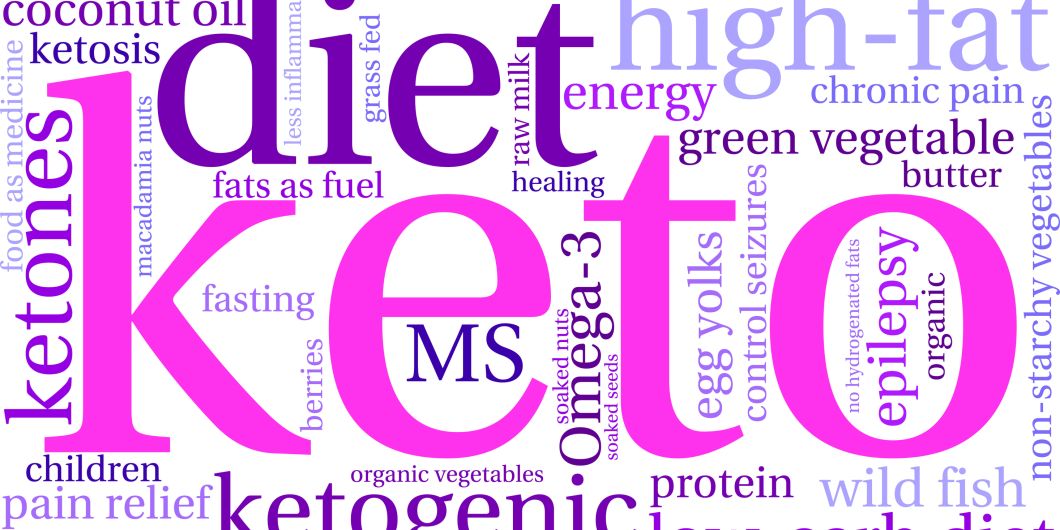
The Ketogenic diet is a term for a low-carb diet which is similar to the Atkins diet. The idea is for you to get your calories from protein, and fat, and less from carbohydrates sugars. Like, soda, pastries, and white bread within your meal. Eventually you will run out of fuel (blood sugar). You’ll then start to break down protein and fat for energy, which can make you lose weight from a system called ketosis.
More...
How ketones work in the ketogenic diet
The body uses glucose for fuel, and when there isn’t enough of this, and your glycogen levels get depleted, your insulin and blood sugar levels drop – your body will search for ways of getting that fuel which it will take from your fat levels.
This usually happens when people are fasting, do a lot of exercises, starve themselves or when they are on a low carb diet, such as the ketogenic diet.
When the body breaks down the fats for its needed energy (beta-oxidation), ketones form, to be used as fuel for your brain and body.
The whole process is called ketosis – hence the ketogenic diet.
When following the keto diet, people eat fewer carbohydrates in order that the body forms ketones to be used for energy.
Individuals attempt this diet to help with lowering blood pressure, to reduce other food cravings they had, to improve their cholesterol, to lose weight and to improve their energy.
To put it even into a smaller nutshell, the keto diet is starving yourself of calories, particularly carbohydrate calories and consuming plenty of fats.
What Is the Ketogenic Diet Plan
The Ketogenic diet (keto) is an eating plan that features a very low intake of carbohydrates within your meal.
Low carb diets are eating plans that typically lower the intake of carbs within your diet to below 100 grams per day, the Ketogenic diet is the strictest of these and limits intake to less than 50 grams per day, preferably starting with only 20 grams.
It is most important to understand that keto is not a fad diet, or a temporary solution to weight loss, it is actually designed to be a lifestyle plan that not only results in successful weight loss, but also promotes overall health, energy, and vitality.
It eliminates junk and processed food by definition, as most carbs are just that allowing you to eat clean, whole food for better overall health and wellness.
While some may question how sustainable it really is to drastically lower your carb intake, in reality, it is quite easy with the wide variety of whole foods available, and several studies show they offer better results for weight loss than low fat diets, or even low calorie diets.
One of the reasons for this, besides various metabolic processes in the body, is that reducing carb intake naturally regulates the appetite, so people find they eat less naturally because they are satisfied and without starvation.
In general, a keto diet may be ideal for the overweight and obese, diabetics, anyone who needs to improve their metabolic health and for various other health reasons.
The Epilepsy Foundation suggest that ketosis can reduce seizures in people with epilepsy — especially those who have not responded to other treatment methods.
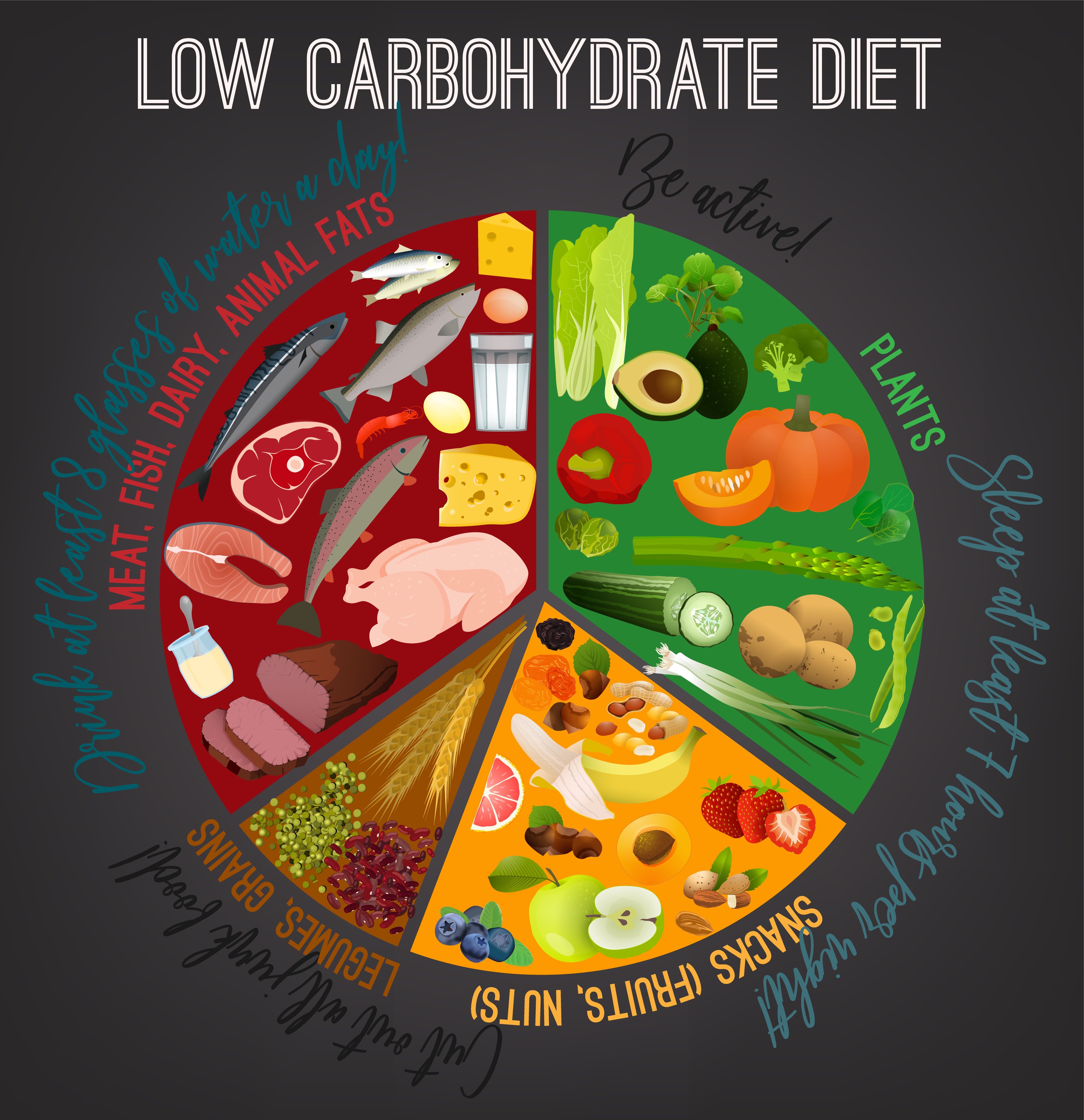
Types Of Ketogenic Diets
Keto is flexible and there are three distinct plans that target different goals.
Standard Ketogenic Diet (SKD)
This one is very low in carbs, with moderate protein, and high in healthy fats.
- The ratio is typically, 75% fat, 20% protein and 5% carbs
High-Protein Ketogenic Diet
This plan is similar to SKD, but incudes more protein.
- The ratio is typically 60% fat, 35% protein and 5% carbs
Cyclical Ketogenic Diet or CKD
This plan is widely used by athletes, bodybuilders, weight lifters and anyone participating in high intensity exercise and features short periods of high carb intake
- 5 keto days followed by 2 high carb intake days
Targeted Ketogenic Diet or TKD
This plan is also used by bodybuilders, athletes and those who workout regularly to fuel intense workouts.
- High load carb intake based around workouts

Fuel Utilization in The Body:
The Main Principle Of Keto
The body has three storage depots to use as fuel:
- Carbohydrates from food
- Protein that is converted to glucose in the liver and used for energy
- Stored body fat and ketones
In a regular high carb diet,
carbohydrates are the main source of fuel for the body.
- Carbohydrates, specifically starches and sugars are readily broken down into glucose in the bloodstream, giving the body its principal energy source.
- At this point, the hormone insulin steps in to remove glucose from the bloodstream as too much sugar can lead to a dangerous condition known as glycosylation.
- Insulin converts glucose into glycogen. Some glycogen is stored inside the liver as a fuel reserve for the brain, and the rest is stored in the muscles as fuel reserves for the body.
- When that muscle glycogen is not used through a lack of energy expenditure or exercise, it stays in the muscles.
- The human body can only store so much glycogen, about 1800 calories worth. When that reserve becomes full both the muscles and the liver send a signal to stop insulin production and excess glucose from dietary carbs begins to build up in the bloodstream, calling for more and more insulin to be released to remove it.
- Insulin levels surge, and eventually this leads to insulin resistance.
- At this point, the liver then sends any excess glucose to be stored as body fat.
- As high carb intake continues, glucose floods the bloodstream, insulin levels increase, and so do the body’s fat stores.
A VICIOUS CYCLE
High Carb Intake
= High Glucose In The Blood
= High Insulin
= Body Fat Stores
While this carb cycle may not occur in everyone, for many who are obese, have a sensitivity to carbs, or who do not expend the required amount of stored energy, this is often the case and the main culprit behind obesity.
Lipolysis and Ketosis
Under normal dietary conditions, ketones play no role in fuelling the body and energy production, but during a Ketogenic low carb diet, ketones become the central player, fuelling the body and at the same time flipping on the fat burning switch.
When the intake of carbs is limited, and their sources controlled, meaning that starches and sugars are eliminated, the body goes into a state called lipolysis, a most efficient biochemical pathway to weight loss and a scientifically proven alternative to using glucose for energy.
Lipolysis is the only practical alternative to giving the body an alternative for glucose fuel, the process that often leads to obesity
Lipolysis occurs when the body begins to burn fat stores for energy instead of carbohydrates that are obtained from the diet.
The by-products of this fat burning process are ketones and so ketosis is the secondary process of lipolysis.
By lowering intake of carbohydrates and the sources of those carbohydrates, which the body will use for energy first when available, it is forced to use its fat stores instead, literally melting it off the body in a state referred to as ketosis.
Ketones, the by-product of ketosis, fuel the body
Sugars, grains, starches, and starchy vegetables fuel your body when you eat them, a state called glucoses (a term coined by the late Dr. Atkins, a pioneer in low carb weight loss).
It is only when you lower carb intake and limit it to non-starchy vegetables, and small amounts of certain dairy foods that you are not eating enough carbs to create glucose, creating a state of ketosis where the body begins to burn its fat stores for energy.
- The only exception to the body not needing glucose for fuel is ketones
Lipolysis and its secondary process, ketosis provides adequate fuel for cells, the brain, and other organs just as glucose from carbs does BUT, unlike when the body uses glucose from carbs for energy, ketosis does not store fat, and actually allows the body to burn stored fat for fuel.
Ketosis Versus Ketoacidosis
Ketosis and ketoacidosis are often confused and they are two completely different things.
Ketosis is a natural fat burning process in the body, while ketoacidosis is a medical condition that occurs only in uncontrolled diabetes.
Ketoacidosis is dangerous, but ketosis on a ketogenic diet is perfectly normal, healthy, and necessary for weight loss.
Fuel Utilization by The Brain
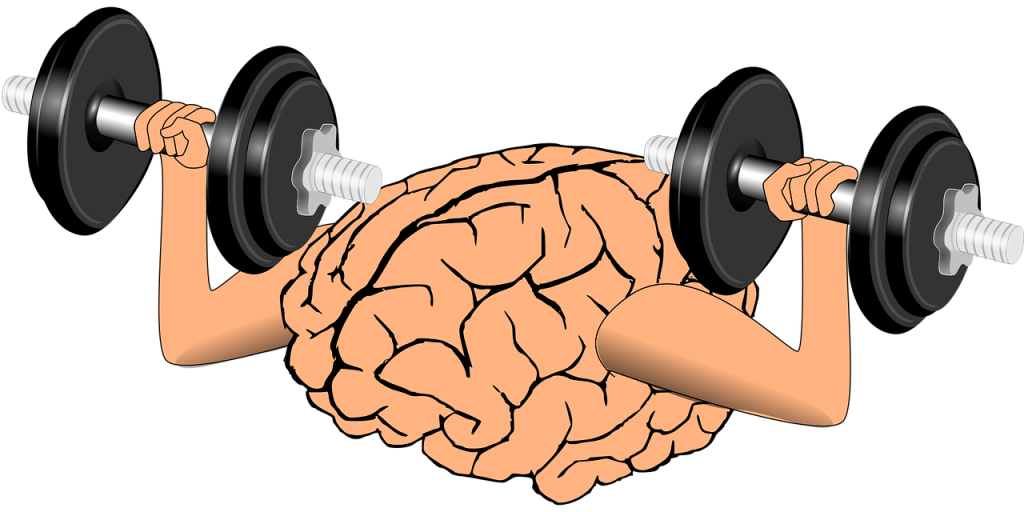
According to Psychology Today, while the brain typically runs on glucose, it has no problems getting its fuel from ketones when they are available.
While the brain can only use glucose for energy, the body takes care of this too. When glucose is lacking, it can turn protein into glucose through a process called gluconeogenesis.
However, you do not want to start using muscle protein for energy. This can be seen during starvation and will have an impact on your metabolic rate.
Take Away Message
Lipolysis and the its secondary process, ketosis uses fat as its primary source of energy.
Ketone production occurs when insulin in the bloodstream is low.
The lower the insulin level, the higher the ketone production and vice versa.
This process can only occur while following a low carb diet and the sources of those carbs are not insulin trigger foods, such as starches or sugars.
Findings on Metabolic Effects of the Very-Low-Carbohydrate Diets.
Findings published on the National Institutes of Health website, Metabolic Effects of the Very-Low-Carbohydrate Diets: Misunderstood "Villains" of Human Metabolism, (Manninen et al) ascertains that reducing carb intake triggers a harmless physiological state known as ketosis, where ketones flow from the liver and spare the need for glucose metabolism providing an alternative source of fuel for the body.
The report further states that there are no clear requirements for dietary carbohydrates in human adults, and that ketosis may offer therapeutic benefits for various different disease states, those common and also those that are rare.
The report further comments on a landmark study that showed a very low carb diet results in significant reduction of body fat and a naturally accompanying increase in lean body mass in male subjects of normal body weight.
Study from The American Journal of Clinical Nutrition
Ketogenic or low carb diets result in weight loss, as just one study conducted in 2008 and published in the American Journal of Clinical Nutrition reported a 12-pound weight loss in only 4 weeks in obese men who followed a low carb diet.
All the studies’ subjects noted less hunger and more satisfaction on the low carb plan than while eating a low-calorie diet.
Stanford University Study
A study conducted at Stanford University (Christopher Gardner, et al) and funded by the National Center for Complementary and Integrative Health studied 311 overweight and obese pre-menopausal women and each one of the female subjects was randomly assigned one of four diets:
- Atkins™
- Zone™
- LEARN™ diet
- Ornish™ diet.
Atkins was lowest in carbs, the Zone was low carb but higher in carbs than Atkins and the LEARN and Ornish diets were both regular carb but low fat plans.
The results showed the women on Atkins to lose the most weight, an average of 10 pounds over 12 months and these women also improved their metabolic profile.
The Glycaemic Index/GI Load Study
One study (Barclay AW, Petocz P, McMillan-Price J, et al. Glycemic index, glycemic load, and chronic disease risk–a meta-analysis of observational studies) concluded that using the glycaemic index (GI scale that rates a food’s ability to impact blood glucose levels) to consume lower GI foods is associated with lower triglycerides and higher good HDL cholesterol lipid profiles.
Duke University Medical Centre Study
Another study conducted at Duke University Medical Centre followed 120 obese subjects for six months. Half of the subjects followed the Atkins plan while the other half followed the American Heart Association’s low-fat diet.
The average loss for the Atkins group was 31 pounds, while the low-fat diet averaged only a loss of 20 pounds.
Atkins Diet Statistics
Atkins diet statistics published in 2003 in the distinguished New England Journal of Medicine reported double the weight loss over a six-month period in those who followed Atkins, over those who followed a low-fat diet.
The Mayo Clinic
The Mayo Clinic states that a ketogenic diet may have desirable effects on diabetes, heart disease, and metabolic syndrome. Additionally, low carb eating is more effective at improving levels of bad LDL cholesterol than moderate-carbohydrate diets.
Bayesian Analysis of Weight Loss Dietary Therapy
The first ever conducted Bayesian study of the effects of diet therapy on weight loss (Sackner-Bernstein, Kanter, Kaul), published in October of 2015 evaluated data from 17 randomized controlled trials of 1,797 people who were obese and overweight.
The evaluation demonstrated more effective and greater weight loss and a reduced predictor of cardiovascular disease risk in those who followed a low carb diet versus a low fat diet.
The Bayesian approach delivers insights, which are not always readily available in the traditionally used meta-analytical research and reveals the likelihood of a certain outcome in regard to the subject matter, a sort of summary that makes it easier for doctors to understand mass amounts of data.
These Findings Used the Following Parameters as To Diet And Study Subjects
- Low-fat diet was based on a 30% or less of calories from fat diet
- The low carb diet was based on consumption of 120 grams or less of carbs per day
- All obese and overweight subjects did not have significant comorbidities
According to, Dr. Sackner-Bernstein, the leader of this Bayesian analysis, the results showed that a low carb diet had a 99% probability of resulting in greater weight loss.
Moreover, while there was a modest difference between the actual weight lost and health outcomes stemming from each diet, there was a clear higher likelihood that reducing carb intake was superior to restricting fat.
Saturated Fatty Acids and Risk of Coronary Heart Disease Study
Another study (Siri-Tarino, et al; Saturated Fatty Acids and Risk of Coronary Heart Disease) reported that replacing saturated fat with refined carbs and sugars, something that has become commonplace in the United States in the last several decades is associated with either no improvement in or increased risks for cardiovascular disease as well as higher risks for dyslipidemia.
The study’s researchers advised that considering the current epidemic levels of insulin resistance as seen in the massive numbers of type 2 diabetes cases and obesity, reducing intake of refined carbs and sugar along with weight control should be a top priority in the public’s dietary goals.
Benefits of the Ketogenic Diet
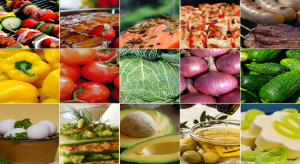


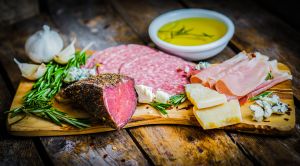




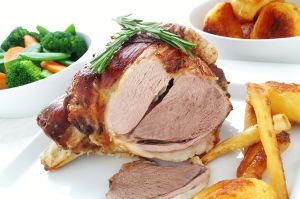


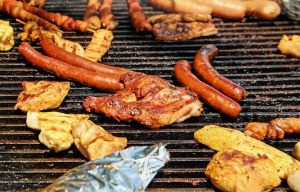

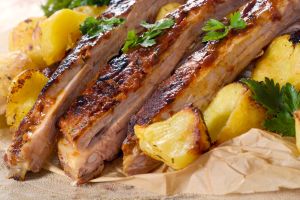
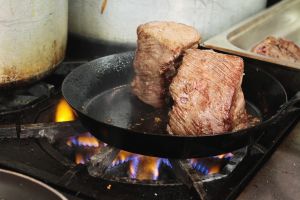

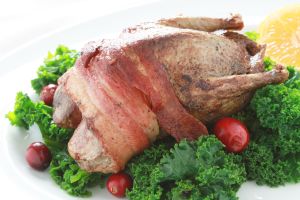

Weight Loss
According to The CDC and the National Association of Diabetes and Digestive And Kidney Diseases:
- More than 1/3 of the US adult population (35.7%) are obese
- More than 1 in 20 people, or 6.3% are extremely obese
- 74% of men (about 3 in 4 men) are either overweight or obese
- The incidence of obesity in both men and women is 36%
Many experts attribute this epidemic in large part to a steady increase over time in the intake of unhealthy carbohydrate rich foods, including table sugar, simple sugars, sweets, refined starches and processed food.
According to one major statistical review (Cohen E, et al., Statistical Review of U.S. Macronutrient Consumption Data, (1965–2011) the number of overweight and obese Americans rose from 42.3% to 66.1% from 1971 to 2011 and during this time:
- The consumption of fat decreased from 44.7% to 33.6%
- The consumption of carbohydrates increased from 39% to 50% from 1965 to 2011
Experts, such as Dr. Sackner-Bernstein, surmise that statistics imply a link between high carb intake in the American diet and obesity on a societal scale.
The analysis protocol of this study used data from various randomized clinical trials, which is the gold standard for assessing whether a treatment makes a real difference for any condition.
Low carb eating results in weight loss and has done so for thousands of people who have struggled with their weight all their lives.
Eating Low Carb:
- Eliminates those pesky out of control cravings
- Stabilizes blood sugar and consequently the appetite
Research has shown that reducing carbohydrate consumption and replacing them with protein and healthy fats results in reducing overall calorie consumption naturally and without starvation.
The side effects of weight loss and healthy weight maintenance are substantial, as obesity is linked to heart disease, type 2 diabetes, stroke, cancer, reduced quality of life, belly fat, joint problems, autoimmune disease, and premature death.
This is one of the main reasons that Keto is not a fad diet or a temporary solution; it is a lifestyle change that allows you to lose excess weight and maintain a healthy weight for ongoing health benefits.
Stabilizes Blood Sugars
Since low carb eating eliminates insulin triggers, (sugars and starches) it is the diet of choice for those with prediabetes or those already diagnosed with type 1 or type 2 diabetes.
Eating a low carb diet reduces the need for the body to produce insulin, which is used to break down the glucose converted from dietary carbs in the blood stream.
High carb intake = high glucose = high insulin = high body fat
Reducing carb intake or insulin trigger foods, reduces the production of insulin in the body, and prevents the erratic blood sugar spikes that may lead to insulin resistance.
If this cycle continues, it eventually leads to metabolic syndrome, which is a set of conditions related to insulin resistance, and includes heart disease, obesity, fatty liver, and type 2 diabetes.
Of course, anyone who is considering changes to their diet should consult their doctor. This is particularly the case if you are taking medication for your diabetes, as this may need to be adjusted too.
Lower Levels Of Visceral Fat
Research has shown that a low carb diet can help to reduce levels of visceral fat specifically rather than the superficial subcutaneous fat.
Visceral fat or belly fat is the most dangerous type of fat that is deeply embedded around major organs inside the body and a recent large study showed a significant correlation between waist size and reduced life expectancy in both men and women.
Maintain Healthy Blood Pressure
High blood pressure poses serious risks for heart disease and stroke. A low carb diet may help to maintain healthy blood pressure.
Other Benefits or Uses of a Low Carb Diet Include:
- May lower risks for heart disease, diabetes, cancer, and stroke
- May lower risks for gallbladder disease
- The ketogenic diet is used to treat several types of cancer and to slow the growth of tumors
- The ketogenic diet is also used to treat traumatic brain injury, epilepsy, Parkinson’s disease, Alzheimer’s disease and polycystic ovary syndrome
How Reducing Carb Intake Affects Appetite
One of the most amazing effects of the Keto diet or any significant reduction of carb intake is how it significantly changes the appetite.
- Hunger is reduced
- Out of control cravings for sugar, sweets and other carbs are gone
- Many reports they no longer wake up in the middle of the night to sleep eat, a common occurrence among those whose appetite is wrecked by carbs
- Calorie counting becomes obsolete as the appetite is reduced naturally and low carb eaters simply want and need less food, without starvation or will power.
- This is the reason why Keto does not include calorie counting, but instead advises people to eat to satisfaction, which amazingly comes from much less food than when carb intake is substantial.
Why is this so?
There are two main reasons.
The Leptin Equation
The hunger-regulating hormone leptin works in the brain to send signals to the body that you are full, so it registers the need to decrease food consumption, increase metabolic rate and shut off the hunger response.
This is a complicated process, and an ongoing cycle that repeats itself, as you get hungry again and again throughout the day.
Therefore, as the levels of leptin rise and wane, so does the sense of hunger (up or down) and to some extent your metabolic rate.
Between meals, your fat mass decreases in size as it is being used for energy, and so does the level of leptin. Less leptin crosses the blood brain barrier, less binds to its receptors and the brain sends the signal to let you know its time to eat again.
The critical point is when leptin crosses the blood-brain barrier (BBB), because if it cannot make it across, the hunger response is never shut off, no matter how much leptin there may be in the blood stream.
This problem, and the often the plight of the obese is when leptin never reaches their brain to shut-off the hunger response, and hunger results in eating, which more makes more fat stores, which makes more leptin, which cannot shut off the hunger response because it cannot get to the brain, in a never-ending cycle.
Why does this happen?
Researches from St. Louis and Japan (Banks A, Coon AB, Robinson SM, Moinuddin A, Shultz JM, Nakaoke R, Morley JE, et all, Triglycerides induce leptin resistance at the blood-brain barrier figured out that triglycerides, which are fats found in the blood stream interrupt the passage of leptin across the blood brain barrier.
When triglyceride levels are high, as they are in most overweight and obese people, they block this passage of leptin where it can signal that the body has had enough food and is satisfied.
What does this have to do with a low carb diet?
It is a well-known fact that a low-carb diet results in a dramatic reduction in triglyceride levels. This reduction ensures that leptin can get to the brain to successfully reduce hunger.
The reduction in triglycerides happens fast once carb intake is reduced and is one of the main reasons that low carb eaters have a substantial reduction in hunger. As an added benefit, once leptin gets to the brain it boosts thermogenesis (fat burning) and so the metabolic rate increases.
This is also one of the main reasons that low-carb wins the battle over low-fat diet plans. A low carb diet can result in a naturally lower caloric intake as people are simply not as hungry as they are when eating many carbs.
They are not white knuckling it through caloric restrictions as they do on the many high carb / low fat plans where people need much more support to get through the dietary day.
Take Away Message
Low carb diets reduce triglyceride levels in the body, allowing the hunger hormone leptin to reach the brain and register satiety, greatly alleviating hunger, and allowing for
a natural reduction in caloric intake through simple
satisfaction and a better regulated appetite.
Conversely, low fat diets raise triglycerides levels and eventually most who follow these types of plans will give into that hunger.
Blood Insulin Levels
Another way that limiting carbs regulates appetite is by regulating insulin.
Researchers at Temple University School of Medicine found that lowering carb intake alters blood insulin levels in ways to promote appetite suppression and satiety.
10 obese people with type 2 diabetes were placed in the hospital 14 days, and each bite of food they took was analyzed and daily blood samples were taken.
For 7 days they ate a normal diet, then for 14 days, their carb intake was limited to 21 grams per day, and they were allowed to east as much protein and fat as they wanted.
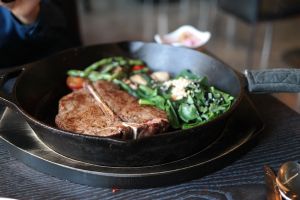
- In the end, analysis showed they ate 1/3 fewer calories on the low carb days, than they ate on the 14 days of a regular diet that included carbs
- They lost an average of 3.5 pounds during the low carb days
- Their blood insulin levels dropped by 23%, which resulted in the suppression of appetite
Carbohydrates stimulate the appetite and cause out of control cravings, in part due to the erratic blood sugar swings and insulin hikes they cause, but a low carb diet works as natural appetite suppressant.
This is one of the main reasons that keto and other low carb plans work very well for those who have struggled all their lives white knuckling it through the various low calorie and low-fat diets they have endured. In many cases, there is no willpower, hunger is not an issue, and a new lifestyle takes over naturally.
Looking at Carbohydrates
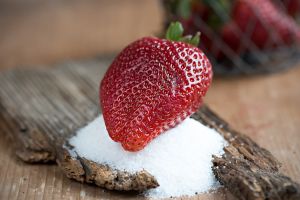
Carbohydrates are one of the three main macronutrients; the others are protein and fat.
Carbohydrates are biomolecules or saccharides, in simple terms, carbohydrates are sugars.
To understand how the Ketogenic diet works, it is important to understand carbohydrates and what they do inside the body.
Types of Carbohydrates
There are two types of carbs, traditionally classified as simple and complex.
Simple Carbohydrates
Simple carbs are those made from only one or two sugar (saccharide) chains. All simple sugars and starches are converted to glucose in the body, except sugar alcohols and insoluble fiber.
Types of Simple Sugars
- Sucrose is table sugar or cane sugar and all items made with it
- Glucose is found in some fruits and starchy vegetables
- Fructose is the sugar in all fruits and honey and is also used to make many processed food products because of its high level of sweetness
- Galactose is the sugar that occurs naturally in dairy, like milk and yogurt
Naturally occurring sugars are those found naturally in a food or in the ingredients used to make a food, for example fruit, milk and vegetables.
Added sugars refer to those added during cooking or manufacturing, and include, corn syrup, honey, or table sugar. Table sugar and many things made with it are an empty calorie food that serves absolutely no nutritional benefits in the body.
Simple Carbohydrates Include: non-starchy vegetables, candy, table sugar and anything made from it, soda, white flour, juices, fruit, milk, honey and syrup just to name a few.
Except for non-starchy vegetable, simple carbs require no break down as they enter the body to be absorbed so they digest quickly to flood the bloodstream with glucose, causing insulin spikes to occur.
This process triggers the release of insulin from the pancreas, which sends food to cells, and any leftover sugar is stored as fat, which contributes to weight gain and obesity.
The constant stimulation of the production of insulin may and does at epidemic levels in the United States, eventually lead to insulin resistance, a condition known as type 2 diabetes.
Take Away Message
Simple sugars are insulin triggers that can promote
weight gain and increase risk factors for type 2 diabetes
Complex Carbohydrates
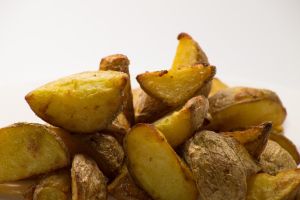
Complex carbs are made up of thousands of sugar chains hence the name complex.
Complex Carbohydrates: any starch including but not limited to corn, potatoes, beans, rice, grains, cereals, and bread.
While some may argue that complex carbs are “better” than simple carbs, low carb diets, like the Ketogenic take a different viewpoint, which is that both simple and complex carbs are insulin triggers that provide the body with a fuel source that can turn to stored fat (glucose).

Take Away Message
Ketogenic diet principles propose that complex carbs
are insulin triggers that provide the body with a fuel
source that can and does turn to stored fat (glucose).
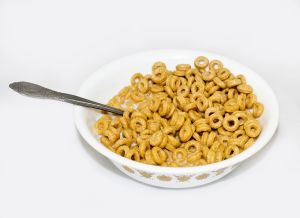
Glycemic Load
Doctors and other researchers in the Harvard Nurses’ Health Study found that baked potatoes and cold cereal were foods that contributed most to increasing blood sugar levels to an unacceptable level, known as "glycemic load.”
The Nurses’ Health Study both part 1 and part 2 is the largest epidemiological study conducted in the US into the risk factors for major chronic diseases in women and has been going strong since 1976.
75,521 women aged 38 to 63 who had no previous diagnosis of diabetes, angina, myocardial infarction, stroke, or any other cardiovascular conditions were followed for ten years (Liu, S., Willett, W.C., Stampfer, M.J., et al).

During the 10 year follow up, the study documented 761 cases of coronary heart disease, 208 of which were fatal and 553 nonfatal, and dietary glycemic load was directly associated with risk of cardiovascular heart disease even when adjustments for smoking status, age, and total caloric intake and other risk factors for heart disease were accounted for.

The Glycemic Index
The Glycemic Index (GI) is a scale of 1 to 100 that measures a food’s impact on raising blood sugars or its glycemic load.
The higher the score a food has the higher the glycemic load.
Take Away Message
Researchers found that those carbs classified as high by
the glycemic index, instead of the traditional classification
of either “simple” or “complex” were better
predictors of cardiovascular disease risks
Simple Versus Complex Carb on the GI Scale
A white potato without skin has a GI of 98, while one raw apple has a 34 GI
The potato is considered a complex carb, while the apple is a simple carb.
Any foods that are considered to cause significant insulin release will typically be high on the GI scale.
Carbs and Ketosis
All carbs, both simple and complex convert to glucose in the body, which is then used as fuel and energy for cells and other organs inside the body.
Sugar Alcohols
In general, sugar alcohols are not insulin triggers and they do not count as impact carbs, but some do have a higher GI than others and should be considered carefully and monitored for their effect on your individual results.
Individual results can vary as to the digestion of sugar alcohols depending upon an individual’s gut enzymes and how the sweeteners are consumed.
Take Away Message
Any glucose not used for energy, will be stored by the body as fat. Conversely, once those sources of glucose are eliminated, namely carbs, the body can turn to fat stores for energy and enter ketosis, which burns fat for energy instead
Sugar Alcohol | Glycemic Index |
Maltitol | 36 |
Xylitol | 13 |
Sorbitol | 9 |
Glycerol | 3 |
Isomalt | 2 |
Mannitol | 0 |
Erythritol | 0 |

The use of carbs for fuel is exactly what the ketogenic diet aims to avoid by greatly limiting carbs and their sources to give the body its alternative energy source, which is fat.
- The main source of carbohydrates in the Ketogenic diet is non-starchy vegetables
This is especially strict in the beginning weeks to trigger ketosis.
But wait, aren’t vegetables simple carbs?
Yes, they are but:
- Non-starchy vegetables are not insulin triggers
- Non-starchy vegetables are very low in carbs, making them a nutrient dense food with a very low glycemic load that supports ketosis
The following carbs are not allowed
- Sugar or foods made with it
- Fruit
- Rice
- Pasta
- Bread
- Milk
- Starchy vegetables
- Any other starches
The Ketogenic diet advises less than 20 grams of net carbs per day, most of which should come from non-starchy vegetables.
How to Calculate Impact Carbs
The Role of Fiber
Fiber is naturally found in many carbohydrates, and remember fiber does not turn into glucose in the body as other sugar carbs do, and so that fiber helps to lower the glycemic load of carb rich foods.
Net Carb Formula
Total Carbohydrate Count – Fiber Count = Net Carbs |
The Ketogenic diet only counts what are known as Net Carbs and the formula to figure out the net carbs of any food is simple.
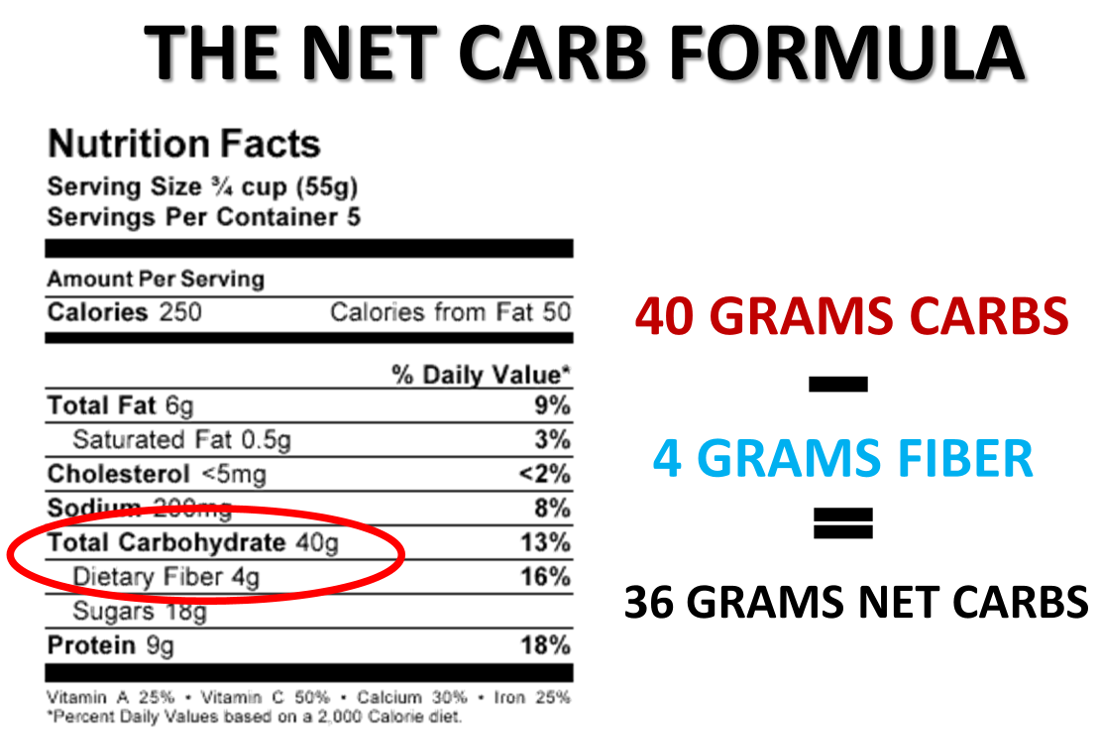
The more fiber a food has, the less impact its carbohydrates will have on blood sugars.
This formula makes it easy to determine the actual impact carbs of any food by simply reading the food labels or looking at its nutritional value.
Key Considerations for Fiber and Carbs:
- Fiber does not negate carbs, it just lowers the impact of carbs that naturally occur within that food. For example, an avocado has 17 grams of carbs, and 13 grams of fiber, yielding 4 grams of net carbs. 1 cup of ice cream has 32 grams of carbs but mashing in an avocado to that ice cream will not reduce it by the 13 grams of fiber in the avocado
- Sugar count listed in the carbohydrates section of a food label is exactly that, sugar. Typically this means the label has separated sugar and fiber in the total carb count
- No credible evidence exists as to the effectiveness of so called “carb blockers” or supplements that claim to slow the absorption of carbohydrates
- There is no such thing as negative carbs, this happens with incorrect calculations and in some food tracking apps when fiber is subtracted from a food that has listed starches and sugars separately from fiber
Rules of The Ketogenic Diet
CARB INTAKE → Less than 50 grams of net carbs per day, but better at 20 grams at least in the beginning:
- Most of the carbs should come from non-starchy vegetables
- Green, fibrous vegetables are your best choices, though many other low carb vegetables are fine
- Always eat a carb food with a protein or a fat, for example have a piece of cheese with cucumbers or salad with chicken.
LOTS OF HEALTHY FATS → Don’t be afraid of fats.
Fat is 90% ketogenic.
Remember that in ketosis, fat is the main energy source for the body, helps remove hunger, provides key macronutrient requirements and natural fats are fine when controlling carb intake. They also have many other benefits, including providing the building blocks for several important hormones and bodily structures.
- The best fats are monounsaturated and saturated, including olive oil, grass fed butter, red meat, and coconut oil. Margarine is never advised, as it is fake and interferes with ketosis. Natural whole fats are always best.
- Limit intake of polyunsaturated fats, including soybean oil, corn oil, and cottonseed oil.
- Fat intake is variable and depends on weight loss goals.
ADEQUATE PROTEIN → Protein is both 46% ketogenic and 58% anti-ketogenic, as some protein will convert to glucose in the bloodstream and inhibit ketosis, so intake should be enough to prevent muscle loss, but not so much that will disrupt ketosis.
Protein Intake Guidelines
- Sedentary lifestyle: 0.69 - 0.8 grams per pound of lean body mass
- Mildly active: 0.8 to 1 gram per pound of lean body mass
- Heavy strength training/bodybuilding and exercise: 1 to 1.2 grams per pound of lean body mass
- Lean body mass is typically defined as - body weight minus body fat
- Men will have a higher lean body mass than women, and typically, it is 60% to 90% of the total body mass.
You can use any of a few online lean body mass calculators - to figure yours.
If you use a Fat Caliper to measure your exact body fat, then you will get a much more accurate lean body mass index measurement.
Keep in mind these protein intake recommendations are just general guidelines.
Protein Choices
- Fatty red meats, chicken with skin, turkey, eggs, deli meats, seafood and fish
- Nuts, seeds and full fat dairy such as heavy cream and sour cream should be taken in moderation as these protein sources are higher in carbs than meat, fish or poultry which have zero carbs
EAT TO SATISFACTION → Eat when hungry until you feel satisfied
INCREASE SALT INTAKE → A little extra salt, can help avoid possible side effects known as keto flu as your body adjusts to ketosis, including headaches, muscle cramps or weakness that occur as result of an electrolyte imbalance and since a low carb diet is naturally diuretic, you don’t have to avoid salt to minimize water retention.
- Get that salt from 1 to 2 cups of broth daily or soy sauce over food
Caution: ask your doctor about increasing salt, and if you are being treated for a condition that requires limited sodium intake, like hypertension continue with the medical advice of your doctor.
DRINK LOTS OF WATER → Water is a natural appetite suppressant and also supports the body’s ability to metabolize fat. Several studies found that reducing intake of water may cause fat deposits to increase, while drinking more reduces them.
Hydration greatly promotes weight loss, so drink lots of fresh water throughout the day.
The more active you are the more hydration you will need to be.
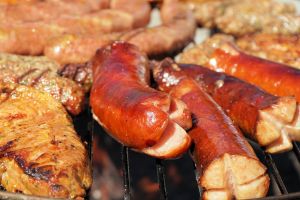
Evaluating Macronutrients in Ketosis
Carbohydrate, protein, and fat are all macronutrients that have differing effects on ketosis based on how they are digested and how each affects glucose levels in the blood.
- Carbohydrates are 100% anti-ketogenic due to their ability to raise both glucose and insulin levels in the blood
- Protein is 46% ketogenic and 58% anti-ketogenic because more than 50% of all protein from food is converted to glucose that raises insulin
- Fat is 90% ketogenic and only 10% anti-ketogenic representing the conversion of the glycerol portion of triglycerides to glucose. Eating fats has minimal effect on ketosis in the literal sense; it is more of an effect on how much body fat versus dietary fat is burned as fuel in the body.
When in Doubt, Eat Less Carbs and More Fat.
Choosing the correct fats to eat in keto
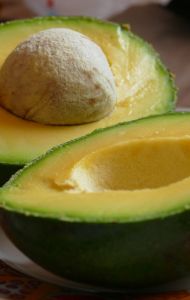
Contrary to all the hype about fat, replacing sugar and carbs with healthy fats does result in weight loss, as shown by many studies.
It also true that low-carb diets have been shown to result in more weight loss and a larger reduction in cholesterol levels than low fat diets.
Fat does not make you fat in it of itself, fat has more calories than carbs or protein, so a high intake of fat may result in a higher caloric intake, which can cause weight gain under normal dietary conditions.
Additionally, it is when carbs and fat are mixed that problems in weight gain arise. The only proof you really need to this fact is the insurmountable amount of carb/fat laden junk food and processed food that we consume as a society that in great part has resulted in the epidemic levels of obesity (1/3 of all US adults) in the United States.
When you limit carb intake, the body will use dietary fats and your own fat stores for energy, literally turning your body into a fat burning machine, helping to reduce belly, thigh, and hip fat.
What Fat Does Inside the Body
While fat has more calories, 9 per gram versus the 4 per gram in both protein and carbs, it’s more important to understand what it does inside the body.
When you are young your metabolism and high activity levels may allow you to eat carbs and fats and maintain a healthy weight, but as you get older and activity levels and metabolism slow down the weight may start to creep up.
If you are already overweight and your diet is filled with carbs, it makes it very difficult for the body to use stored fat for energy because it always defaults to carbs for that purpose.
- Greatly reducing carb intake promotes the body’s ability to burn fat stores for energy resulting in healthy weight loss.
- Unlike carbs, fat also promotes satiety and fullness, helping to regulate the appetite so you eat less. In fact, you must eat two times more carb calories as fat calories to reach the same level of fullness.
- Unlike carbs, fat has little impact on blood glucose, which keeps blood sugars stable, eliminating out of control cravings and hunger that comes after eating carbs.
Types of
fats
- Monounsaturated fats are found in avocados, nuts, olive oil and canola oil,
- Polyunsaturated fats are found in vegetable, seed and nut oils, like soybean, corn and sesame oils along with fatty fish like salmon and sardines.
- Essential fatty acids include both omega-3 and omega-6 fatty acids that the body cannot produce on its own. Shellfish is rich in omega-3s and you can get omega-6s from chicken, pork, and seeds.
Ideally, you need to balance intake of both omega-3s and omega 6 fatty acids with a balanced combination of shellfish, fatty fish and nuts, canola oil and flaxseed.
Saturated fats are those that are solid at room temperature, and their best sources on a low carb diet are butter, red meat, and coconut oil. Since the target of the Ketogenic diet is to burn fat for energy consuming these types of fats is not only acceptable, but also required, and many studies confirm that this fat intake while on a low carb diet does not raise cholesterol or fat levels in the blood.
- Trans fats (also known as partially hydrogenated vegetable oil or hydrogenated vegetable oil) are bad news, increase risk for heart disease and should always be avoided when eating a Keto diet. These are typically found in fried foods, sweets, baked goods, processed snacks and food products, cookies, crackers and vegetable shortenings.
Optimal Fat Intake
Remember, the goal of fat is to provide satiety, boost energy, increase metabolism and support the enjoyment of food as fats make everything taste better.
It is not advisable to eat so much fat that you send your caloric intake through the roof. The following guidelines can help you get an idea of daily fat intake; of course, body size will determine the portions, as larger men will eat more than smaller women will. You can choose fats in any combinations you see fit.
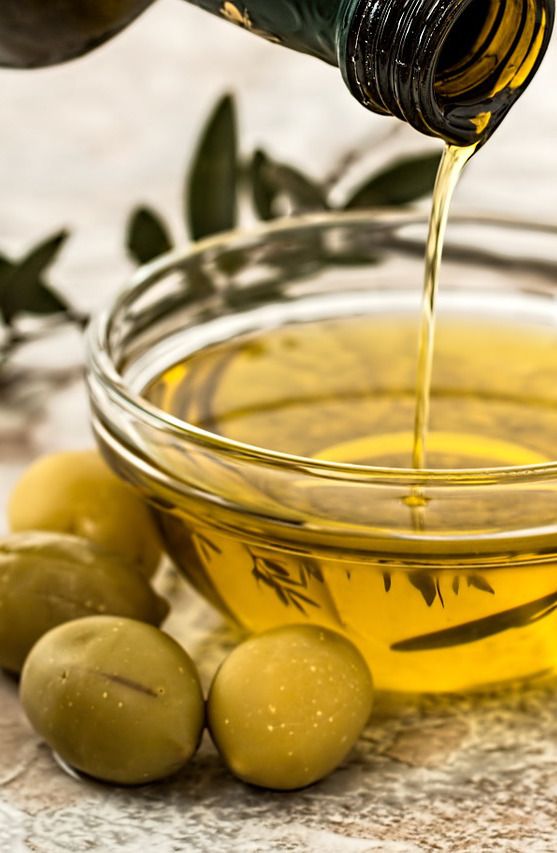
Daily Fat Intake Guidelines:
2 to 3 eggs
1 tablespoon of butter
2 tablespoons of heavy cream
2 tablespoons of olive oil when cooking or for salad dressings
2 ounces of cheese
4 to 6 ounces of meat, chicken, seafood, or fish at each meal
½ an avocado or 10 olives
1 to 2 ounces of nuts or seeds (depending on your ketotic state and as long as they do not take you out of ketosis)
Use canola, peanut and grapeseed oils for pan cooking and stir-frys
Use full fat mayonnaise, canola oil mayo is a good choice
Coconut oil contains ketosis-boosting MCTs (medium chain triglycerides).
A tablespoon a day is fine in replacement of another fat.
You can also get a purer form of MCTs in supplement oil form.
Avoid low fat foods, including reduced fat dairy.
These foods typically contain carbohydrates, and chemical compounds that have not been well studied as to risks for human health.
Replace milk in coffee with heavy cream, which has less than 1 gram of carbs per tablespoon, while milk is very high in natural sugars
Conclusion:
Fats and oils: MCT oil is ideal on this diet (see below) , also olive oil and organic butter.
Protein: Try and eat only organic meat from grass-fed cows that roam in a pasture naturally. Don’t eat too much protein on a ketogenic diet.
Vegetables: Frozen or fresh vegetables are not really that important; just stick more with veggies that are above the ground, green and leafy.
Dairy: Most dairy is suitable on the ketogenic diet; just try to make sure you consume full-fat dairy. Choose the harder cheeses which have fewer carbs in them.
Nuts and seeds may be eaten but in moderation. Try and eat the fattier nuts such as almonds and macadamias
Beverages: Keep it simple, sticking mostly with water. Try and flavor with stevia-based flavors. Adding lime or lemons will do great.
MCT oil is very beneficial to the ketogenic diet
Many individuals say that the ketogenic diet is the way to go if you want to lose weight in the future. This diet is all about low carbs and high-fat eating, and this is where MCT oil has become so important in this diet.
The whole aim of this diet is to toss out all carbs and replace them with healthy fats, putting the body into a ketosis state; when your body becomes efficient at burning up fat and turning it into energy.
If you follow the SKD diet or standard ketogenic diet, you would be consuming 75% of fat, 20% of protein and just 5% of carbs. An average woman requiring around 2000 calories would eat no more than carbs weighing around a mere 25 grams.
One sandwich in a day or a boiled potato, for instance, would be the carbs allowance for the day. If you exceed that, you would go out of ketosis.
Your protein intake too, should not exceed 100 grams in a day. Anything higher than that would also affect ketosis. Remember, the ketogenic diet is a high-fat diet, not a high protein diet.
Many individuals believe it’s out with the Paleo diet and in with the Keto diet. That’s your call. Interest in the keto diet really spiked up during 2017 according to Google searches and gained in popularity daily.
Today, it is suggested that it’s now twice as popular as it was back then. According to data, it’s the in diet.
Is the keto diet just a weight loss fad?
Any diet that is a fad, when it comes to weight loss, is a diet where people change their eating patterns quite drastically to achieve the weight loss that the diet claims will happen.
This makes ordinary people not able to keep up with the diet for much longer than 2 months or so. After the 2 months are up, they find themselves reverting to their old eating habits again.
The diet did not become their lifestyle of eating. The Biggest Loser contestants are good examples of this
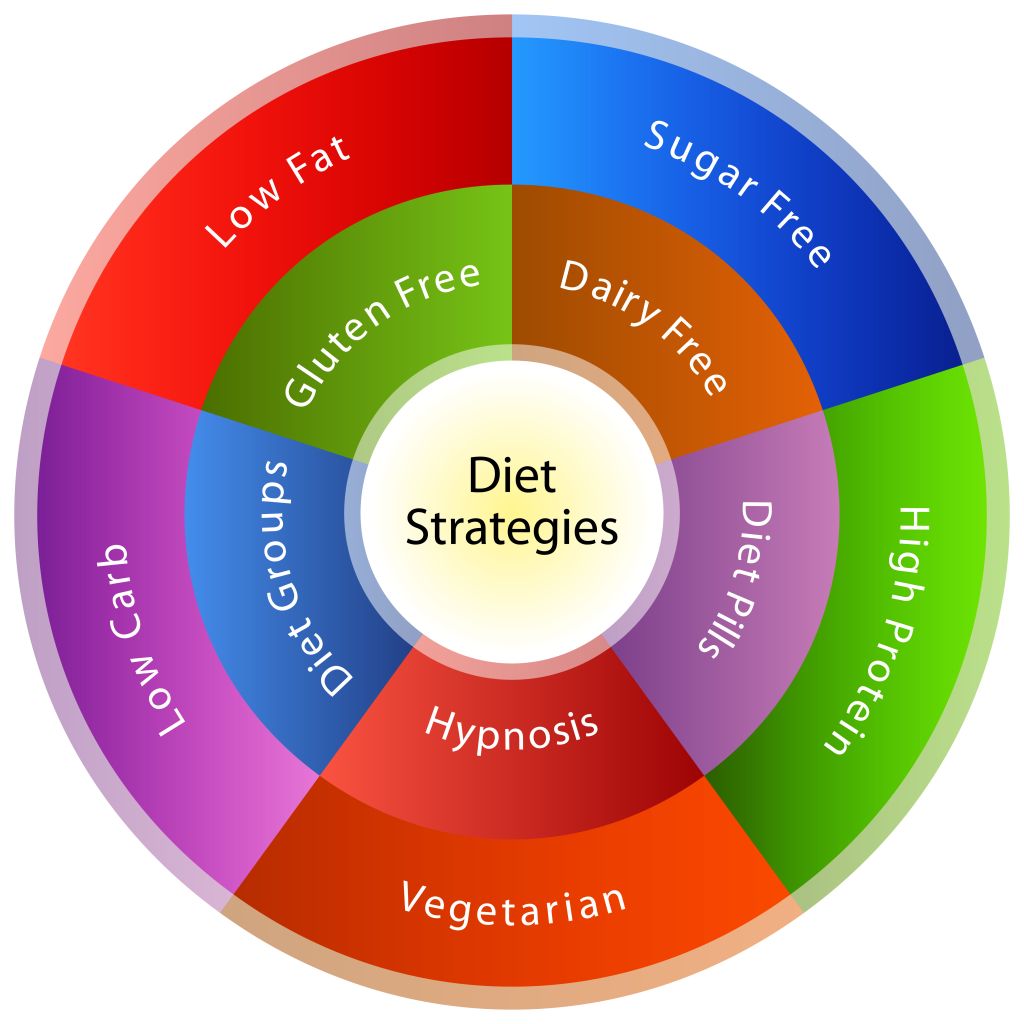
In answer to the question, it is believed that the ketogenic diet is a fad diet, because if you can only eat less than 25 grams of carbs a day – one banana or small yogurt – you are changing your eating style drastically as mentioned above – that equates to a fad diet.
Are you going to stay on this diet for the rest of your life; make it part of your lifestyle?
If you answer yes, that’s good.
But if you don’t, you will put on all the weight again later.
You will need to forget your potatoes, rice, pasta, legumes, beans, corn or even just a regular type of meal with your family.
It means you must wave goodbye to social events because no snacking is allowed, no drinks and no treats.
Unlike other diets, on the ketogenic diet, if you do indulge in carbs for a day, you are already putting your body out of ketosis.
It is not surprising that the dropout rate on the diet has been somewhat huge. “Mr. Ketosis” himself, Dr. Peter Attia, no longer follows his diet anymore, saying, “I’m still carb-restricted by the standards of most Americans, but nowhere near the ketogenic lines of 2011, 2012, and 2013.”
The reason why people are claiming to lose weight on this diet is because they are cutting calories. You can count calories within the weight watches diet plan.
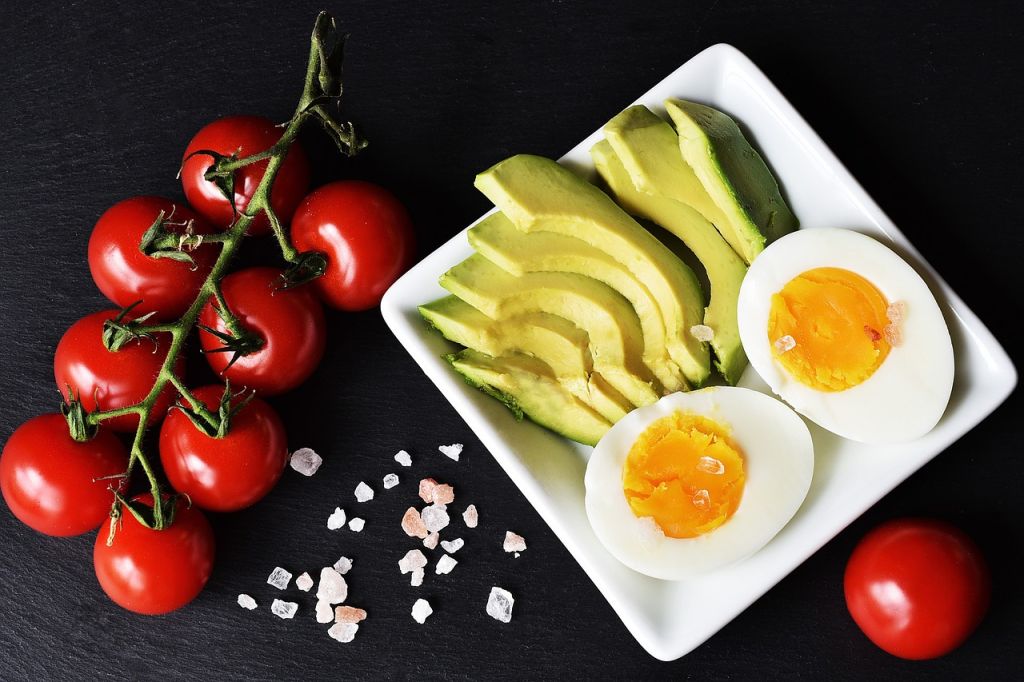
Most of us do eat poorly at times. We don’t consume enough veggies and fruit and we eat calorie dense foods, which make us put on weight which can cause health problems too.
Diets force us to do without and most of what we cut out will be sugar, junk food, and drinks. That’s the reason you lose weight.
Don’t think it is because your ketosis state makes your metabolism work overtime, and don’t believe it is tossing out carbs is the reason you are losing weight. It is really simply that you are eating fewer calories every day, full stop.
But still, when people do lose weight and let’s face it, losing weight can improve heart health, people are inclined to attribute the benefits to the ketogenic diet.
Also, when you do cut carbs as you would on the ketogenic diet, you also lose water within 24-48 hours and this also leads to instantaneous weight loss.
The weight loss is actually from the loss of water and not really from the carb restrictions. However, the ketogenic diet has proven to be a good diet for children who suffer from severe epilepsy, as well as for diabetic people.
What MCT oil is about, why it is being ranked as a super food and how it will benefit your health on the ketogenic diet.
You might have heard people in the gym, stores, or health shops, referring to MCT oil. You might be left wondering yourself whether this so-called oil that is supposed to burn fat, rev up your metabolism and improve your health is just another fad or is it really a super food.
We’ve heard much spoken about coconut oil and its benefits over the years – now we have MCT oil set to take its place.
Coconut oil has been touted for years as a top nutritional oil, a super food, extremely healthy and natural, reported making your skin look like a baby, an oil that can keep your cholesterol levels in check and of course, help you to lose weight.
Experts say coconut oil got its good reputation because it contains MCT in it or medium-chain triglycerides. Now we are hearing oil that is called by that name, MCT.
What precisely is MCT oil?
- It is very complicated to try and explain here what medium-chain-triglycerides and long-chain triglycerides are all about – how triglycerides work. But it will help you to understand how they work in relation to dieting and food, etc. Read here for yourself.
- The fact is that many people have been taught not to include saturated fats in their diets, but recently there are researchers and even fitness gurus who say that saturated fats aren’t all that bad, that in fact, MCT oil, which contains some saturated fats will very quickly help to digest your foods and turn it into fuel in your body. The speed of digestion coming from MCT oil could be the very reason that the author of ‘Eat Fat, Get Thin’ book, Mark Hyman says that MCT oil could be known as the “secret fat”, the one that makes you slim – it’s because it boosts the job of burning fat in your body as well as enhancing your mental clarity.
- There are four different types of MCTs; caprioc acid, caprylic acid, capric acid and lauric acid. To put it very simply, MCT oil is just more concentrated oil than coconut oil. A top source of MCT and medium-chain triglycerides is coconut oil. People in the western world, like in America, eat more from the long-chain variety fats. In doing this, they make it harder for their bodies to process fatty acids and to digest it, making it even harder for that fat to be converted into energy. With the medium-chain triglycerides, such as coconut oil, the body absorbs it more easily because there is less energy involved in getting the fats metabolized.
- That being said, the most popular source where MCT oil comes from is coconuts; growing on the fringes of many an exotic island. The countries that mostly produce coconuts are the Philippines, India, Sri Lanka, Brazil, and Indonesia – Asia, in fact, produces 90% of the world’s coconuts.
Other countries are Vietnam, Mexico, Papua New Guinea, Malaysia, and Thailand. The coconut tree is a resilient tree, growing successfully in different soil types. They do need plenty of rainfall though in order to thrive.
Because the demand for coconuts and coconut oil has burgeoned over the last few years, a lot of these countries are searching for opportunities to increase the production.
Other examples of medium chain variety triglycerides would be palm kernel oil and some of the heavy whipping creams.
MCT gets made from distilling concentrations of medium-chain triglycerides.
What are the benefits of MCT oil?
Not a lot of fat is stored because MCT oil is absorbed rapidly into the body, converting it into energy just about immediately – not much is stored as extra fat.
It is absorbed quickly by the body because the chemical structures of MCT oil allow it to get processed easily; easily assimilated by the body.
Digestion is improved because MCT oil enhances the whole digestive processing system and because of this, also prevents constipation.
The metabolism is fueled because the medium chain triglycerides found in MCT oil also helps to increase thermogenesis in your body.
Thermogenesis is the production of heat in a human or an animal’s body.
When thermogenesis is increased, metabolism kicks in and helps your body to work more efficiently.
Keeps your weight regular, because taking it gives you a feeling of satisfaction, preventing cravings from occurring and thereby preventing you from snacking during the day.
Boosts brain function, because it helps in creating ketones. These are used for energy by your brain, aiding in cognitive functioning, memory, and mental clarity.
It contains antioxidants which we all know can reduce cellular damage and helps to support the immune system; generally, your overall health.
It has anti-inflammatory properties, keeping it down and therefore controlling certain health conditions that would arise because of inflammation.
Gut health is improved because MCT oil supports your gut microbiomes, preventing harmful bacteria and supporting the good ones.
Improves heart health.
A 2010 study proves that MCT oil helps to prevent cardiovascular disease as well as metabolic syndrome.
Apart from the above health benefits, MCT oil has proven to have skin benefits as well, and people are known to add it to their special lotions and potions, cosmetics and lip balms, etc.
This makes sense, seeing as it contains antifungal, antiviral and antimicrobial properties.
Truth is, MCT oils does promote health and needs to be consumed every day to benefit from the wonderful benefits.
Sources of MCT oil are coconut oil, organic butter from grass-fed cattle and dairy products that are full-fat. Taking MCT oil just means you are getting the above oils in a much more concentrated way. MCT oil is available in powder form, liquid form, and capsules if you prefer it.
It’s multi functional
MCT oil, in its pure form, is quite flavorless, and clear.
And that’s how it needs to be consumed just like that, without any heating. It is also an unrefined oil which means it has a low smoke point like wheat germ oil, flaxseed oil or walnut oil – you won’t find it responds very well to heat.
Let’s just say you won’t find MCT oil beneficial for cooking.
What it is excellent for, however, is when you add it to your smoothies or your coffee and salad dressings, not a lot though, just like ½-tablespoon to 3-tablespoons. If you take too much you could cause your digestive system to be distressed. One tablespoon of MCT oil will set you back about 100 calories.
It might be a little bit difficult to ascertain whether the MCT oil that you buy down at the store is legit because it’s still early days of discovery.
Buy the ones that say it’s got coconut and palm oils in rather than bottles that say ‘has coconut derivatives’ in it. Lots of experts will tell you that MCT oil acts like you are eating carbohydrates.
This is because it offers all that energy with a difference – MCT oil won’t raise your blood sugar like carbs do nor increase your insulin levels either like carbs do.
Do people have problems consuming MCT OIL?
This question is asked by many people who want to follow diets such as the ketogenic diet and others. Many people do tolerate taking MCT oil well.
There are those who if they take too large a dose, have experienced gastrointestinal complaints like feeling nauseous, vomiting and diarrhea. If you are one of those people, stay calm and don’t panic or give up on the benefits of MCT oil immediately.
The best thing is to start just with small doses, for instance about half-teaspoon a few times in the day and then increasing the doses as you tolerate the oil. Think of MCT oil as a supplement to your diet, and not as a replacement for the other healthy fats that you have in your diet.
Some people just can’t get enough of the keto diet
The most popular diet around at the moment appears to be the ketogenic diet. Those who are on it swear by its abilities to help drop the pounds.
Those who aren’t on it can’t understand how all the fat and butter eating isn’t affecting the peoples’ hearts. It’s pretty easy though – if you eat the right type of fats, you can burn off the fat, and even build some muscle on this diet, and this is what the celebrities are doing right now.
The keto diet is turning out to be the Victoria Secret models’ well-kept secret as they strut their stuff on the runways of the world.
Ask Alicia Vikander from Tomb Raider’s where she got her hot bod from?
These celebs are finding the appeal of the low carb and high-fat diet ideal for their lifestyles and they are very in on the hype.
When it comes to getting down and staying in shape, the Hollywood crowd know how to do it, and Halle Berry, Megan Fox and Kourtney Kardashian are no exception.
Conclusion
Even though the ketogenic diet actually has a long history, today it is becoming a new trend, an obsession, keeping the celebs strong and sleek.
Doctors have long since been prescribing this diet to treat Type 2 diabetes and epilepsy. But really, what is forgotten in the hype of the ‘latest diet trends’ is that this diet is the same as what Dr. Robert Atkins and all the low carb peddlers have been trying to sell since 1960 already.
We all just fall for the same diet, just under another name! Unfortunately, the old keto diets did not work for thousands hoping to lose weight, and also, unfortunately, there is no evidence to prove that this new-found trend will prove to be any different.
Try it for yourself!
Low Carb Food Shopping List
There are many healthy choices to add to your menus, and endless low carb recipes available in both books and online.
There are also some ingenious swaps that people have created so you can still enjoy lasagna, pizza, and high carb favorites without scarifying ketosis.
Meat, fish and Poultry
Zero Carb Foods
- All Red Meat
- Chicken
- Turkey
- Pork
- Veal
- Lamb
- Fowl (duck, goose, hen, quail)
- Organ Meats (tongue brains, liver, heart, and kidneys)
- Game Meats (ostrich, venison, caribou, bison, and elk)
- Exotic Meats (such as ostrich and emu)
- Cold Cuts And Ham (read label some have added sugar)
- Bacon
- All Fish
Sea Foods
- Shrimp – 0 Carbs
- Crawfish - 0 Carbs
- Crab - 0 Carbs
- Lobster – 2 grams per 6 ounces
- Mussels – 8.4 per 6 ounces
- Oysters – 12.4 per 6 ounces
- Scallops – 3.9 per 6 ounces
- Clams – 8.7 grams per 6 ounces
- Squid – 7 grams per 6 ounce
Fats and Dressings
- Butter - 0 Carbs
- Mayonnaise - 0 Carbs
- Oils – 0 Carbs (olive, avocado, and coconut oils for general use. Cold-pressed or expeller-pressed canola, peanut, and grapeseed oils are good for stir-fries)
- Pure Unrefined Cold Pressed Extra Virgin Coconut Oil – 0 Carbs
(contains medium chain triglycerides fatty acids, metabolized by the body to be used as immediate energy and not stored as fat) - Blue Cheese Dressing (2 tbsp.) – 2.3 grams
- Italian Dressing (2 tbsp.) – 3 grams
- Cesar Dressing (2 tbsp.) - .5 grams
- Ranch Dressing (2 tbsp.) – 1.4 grams
- 100 Island Dressing (2 tbsp.) – 4.8 grams
Note: Check labels on all commercial dressings for carb counts
Soy Vegan Protein
- Soybeans - 6.2 grams per 1/2 cup
- Soy Milk – 1.2 grams per cup
- Firm Tofu – 2.2 grams per 4 ounces
- Silken Tofu – 3.2 grams per 4 ounces
- Tempeh – 16 grams per cup
- Soy Nuts – 2 grams per ½ ounce
Vegetables
- Alfalfa Sprouts - .4 grams per cup
- Daikon – 1 gram per ½ cup
- Endive - >1 gram per ounce
- Escarole - >1 gram per ounce
- Arugula - .2 grams per ½ cup
- Bok Choy - .8 grams per 1 cup/raw
- Celery - .8 grams per 1 stalk
- Chicory Greens - .6 grams per ½ cup
- Green Onions - .1 per 1 tablespoon
- Cucumber - 1 gram per ½ cup sliced
- Fennel - 3.6 grams per 1 cup
- Iceberg Lettuce - .1 grams per 1/2 cup
- Jicama - 2.5 grams per ½ cup
- Parsley - >1 gram per ounce
- Bell Peppers - 2.3 grams per ½ cup
- Radicchio - .7 grams per ½ cup
- Radishes - .9 grams per 10 pieces
- Romaine Lettuce - .2 grams per ½ cup
- Artichoke (1/4 Steamed) – 4 grams
- Artichoke Hearts In Water - 2 grams per 1 heart
- Asparagus - 2.4 grams per 6 spears
- Bamboo Shoots - 1.1 grams per 1 cup
- Broccoli - 1 gram per 1/2 cup
- Brussels sprouts - 2.4 grams per ¼ cup
- Cabbage - 2 grams per ½ cup
- Cauliflower - 2 grams per 1 cup
- Chard - 1.8 grams per ½ cup
- Collard Greens - 4.2 grams per 1/2 cup
- Eggplant - 1.8 grams per ½ cup
- Hearts of Palm - .7 grams per 1 heart
- Kale - 2.4 grams per ½ cup
- Mushrooms – 1 gram per ½ cup
- Kohlrabi - 4.6 grams per ½ cup
- Leeks - 1.7 grams per ¼ cup
- Okra - 2.4 grams per ½ cup
- Black Olives (10 small, 5 large, or 3 jumbo olives) - 1 gram
- Onions - 2.8 grams per ¼ cup
- Pumpkin - 2.4 grams per ¼ cup
- Sauerkraut - 1.2 grams per ½ cup
- Spinach - .2 grams per ½ cup
- Summer Squash - 2 grams per ½ cup
- Tomato (1 medium) - 4 grams
- Cherry Tomatoes - 4 grams per cup
- Turnips - 2.2 grams per ½ cup
Fruits
- Limes – 2 grams per 1 ounce
- Lemons – 2 grams per 1 ounce
- Rhubarb - 1.7 grams per ½ cup
- Avocado – 4.8 grams each
- Apricots – 5 grams per fruit
- Strawberries – 11 grams per cup
- Blackberries - 7 grams per cup
- Raspberries – 5 grams per cup
- Red Grapefruit - 9 grams per 1/2 fruit
Note: with the exception of lemons and limes in moderation, fruit is best introduced slowly into the diet once ketosis has been established and weight loss goals are being met, and you should monitor their effects on your weight loss and adjust as needed.
Dairy
- Egg White – .3 grams
- Egg Yolk - .3 grams
- Whole Egg - .6 grams
- Heavy Whipping Cream - .5 grams per tablespoon
- Half-and-Half - .5 to 1 grams per tablespoon
- Plain Full Fat Greek Yogurt - 9 grams per cup
- Full Fat Sour Cream - 2 grams per 4 tablespoons
- Unsweetened Almond Milk – Less than 1 gram per cup
Cheeses
- Gruyère Cheese - .1 grams per 1 ounce
- Cheddar - .5 gram per ounce
- Fontina - .4 grams per 1 ounce
- Havarti - .7 grams per 1 ounce
- Parmesan - .9 grams per 1 ounce
- Gouda - .6 grams per 1 ounce
- Mozzarella - .6 grams per 1 ounce
- Ricotta - .8 grams per 1 ounce
- Blue Cheese - 1 gram per 1 ounce
- Edam - .4 grams per 1 ounce
- Monterey - .1 grams per 1 ounce
- Muenster - .3 grams per 1 ounce
- Provolone - .6 grams per 1 ounce
- Neufchatel - .1 to .8 grams per 1 ounce
Herbs and Spices
- All Herbs And Spices Have Very Few Carbs
Nuts and Seeds
- Almonds (2 tbsp. whole) – 1.4 grams
- Peanuts (2 tbsp.) – 1.8 grams
- Hazelnuts (2 tbsp. chopped) - 1 gram
- Macadamia Nuts (2 tbsp. chopped) -.9 grams
- Pecans (2 tbsp. chopped) - .6 grams
- Pine Nuts (2 tbsp.) - 1.7 grams
- Pistachio Nuts (2 tbsp.) - 3.1 grams
- Walnuts (2 tbsp. chopped) - 1.1 grams
- Pumpkin Seeds - 5 grams per ounce
- Sunflower Seeds (2 tbsp.) – 1.5 grams
- Almond Butter - 3 grams per tablespoon
- Peanut Butter – 2.4 grams per tablespoon
Note: Like fruit, nuts are best introduced slowly into the diet once ketosis has been established and weight loss goals are being met, and you should monitor their effects on your weight loss and adjust as needed.
Zero Carb Drink
- Water
- Unsweetened Tea
- Unsweetened Coffee
- Club Soda
- Diet Soda (be cautious as artificial sweeteners
- can affect low carb weight loss)
- Sugar Free Sparkling Water
- No-Calorie Flavored Seltzers
- Herbal Tea (without added barley or fruit sugars)
Alcoholic Beverages
Pure Spirits Have 0 Carbs
- Gin
- Rum
- Vodka
- Whiskey
- Martini
- Tequila
A small amount of alcohol typically will not disturb ketosis, but it has to be the right alcohol. This means no beer, which is basically liquid bread, and no sugary cocktails, such as Pina Coladas, Daiquiris, White Russians, or Margaritas.
Pure spirits are best and should only be mixed with sugar free liquids, like water, club soda or diet tonic. Wine, which has a low amount of carbs, is okay but in strict moderation.
Track your weight loss progress if you are drinking to see if the alcohol has any adverse effect on your weight loss, if your progress stalls eliminate liquor to see if that makes a difference.
Miscellaneous and Snacks
- Shirataki Noodles – 0 Carbs
- White Vinegar – 0 Carbs
- Balsamic Vinegar – 0 Carbs
- Red Wine Vinegar – 0 Carbs
- Rice Vinegar (seasoned) 3 grams per tbsp.
- Soy Sauce - 1 gram per tablespoon
- Mustard – 0 Carbs
- Unflavored, powdered gelatin (use as a binder in recipes) – 0 Carbs
- Most Hot Sauces – 0 Carbs
- Turkey or Beef Jerky (not teriyaki flavor) - 3 grams per ounce
- Kale Chips - 8 grams per ounce
- Coconut Flakes - 4 grams per ounce
- Pickles - 1 gram per pickle
- Pepperoni – check label for carb count
- Flaxseed crackers – check label, some brands have about 2 grams per cracker
High Carb Foods to Avoid
All Sugars
- White sugar
- Brown sugar
- Powdered sugar
- Any food with added sugar
- Processed food with added sugar
- Junk food with added sugar
- Jams and Preserves
- Some Sauces (check nutritional label and ingredients)
- Fructose (sugar in fruit)
- Some Salad Dressings (check nutritional label and ingredients)
- Cocoa mix
- Molasses
- Honey
- High-fructose corn syrup and foods made with it Syrups
Baked Goods and Sweets
- Cookies
- Cake
- Pie
- Brownies
- Donuts
- Pastries
- Muffins And all others Candy
- Chocolate Bars
- Hard Candy
- Milk Chocolate
- Cotton Candy
- And all others made with sugar
Packaged/Processed Snacks
- Flavored Nuts
- Pretzels
- Rice Cakes
- Breakfast Bars
- Cheese and Crackers Snacks
- Raisins
- Potato Chips
- Tortilla Chips
- Popcorn
- Pop-tarts
- Granola Bars
- Twinkies
- Cupcakes
- And other boxed snacks and products
Dairy
- Flavored Dairy
- Added Sugar Dairy
- Fruit At The Bottom or Sugar Added Yogurt
- Whole and Skim Milk
- Soy Milk
- Ice Cream
- Margarine
- Pudding
- Cottage Cheese
Sugary and Starchy Fruit
Medium Sugar Fruit
- Blueberries
- Coconut Meat
- Cantaloupes
- Watermelons
- Nectarines
- Papaya
- Peaches
- Apples
- Grapefruit
- Honeydew Melons
- Guavas
- Apricots
High Sugar Fruit
- Oranges
- Kiwifruit
- Pears
- Pineapple
- Plums
- Cherries
- Grapes
- Figs (Also Starchy)
- Bananas (Also Starchy)
- Mangos
- Tangerines
- Pomegranates
- Dates
- Applesauce
- Dried fruit (worst choice as it has very high concentrations of sugar from the drying process)
Starchy Vegetables
- White Potatoes (French fries and potato chips)
- Sweet Potatoes or Yams
- Corn
- Peas
- Squash
- Root vegetables not advised for very low carb diets (beets, carrots, parsnips, rutabaga, turnips, butternut squash, and winter squash)
Grains and Starches
- Any Fried Food
- White Rice
- Bread, Bagels and English Muffins
- Croissants
- Tortillas
- Pasta
- Cold Breakfast Cereals
- Oatmeal
- Cream of Wheat
- Porridge
- Barley
- Amaranth
- Millet
- Quinoa
- Spelt
- Couscous
- Bulgur
- Rye
- Muesli
- Crackers
- Pizza
- Corn Starch
- Pancakes
- Waffles
- French Toast
- White Flour
- Whole-Wheat Flour
- Rice Flour
- Corn Flour
- All Whole Grains Too
Legumes
- Pinto Beans
- Black Beans
- Kidney Beans
- Chickpeas
- Navy Beans
- Lima Beans
- Baked Beans
- Lentils
Drinks
- Soda
- Juice
- All Sweetened Drinks
- Sweetened Or Flavored Tea
- Sweetened Or Flavored Coffee
- Frappuccino Coffee Drinks
- Milk Shakes
- Root Beer Floats
- Malts
- Frozen Coffee Drinks
- Sports Drinks (unless zero calorie)
- Beer
- Sweet cocktails – (Pina colada, daiquiri, mai tai, bloody Mary, margaritas, screwdriver, white Russian, rum drinks etc.)
- Wine coolers and alcopops
Sample 1 Day Keto Menu
Breakfast
Eggs cooked in butter
Bacon or sausage
Black coffee or with stevia or Splenda and heavy cream or tea
Snack
Turkey lettuce wraps with mayonnaise
Lunch
4 to 6 oz. steak with onions and mushrooms
Grilled kale with butter and garlic or raw kale with dressing or lettuce salad with dressing
Water, herbal tea, no calorie flavored seltzer, or coffee with stevia and heavy cream
Snack
½ avocado or 10 olives or 1 ounce of cheese with cucumber or celery slices
Dinner
4 to 6 oz. Grilled chicken
Vegetables (broccoli, asparagus, greens, green beans, or other low carb vegetables, your choice) with butter or salad (lettuce, tomato, onion, cucumber, sprouts, bacon bits) with olive oil and vinegar or a creamy dressing
Water, herbal tea, or no calorie flavored seltzer
Snack
Hard-boiled egg with smoked salmon or flaxseed crackers with salsa
Note: Portion sizes are not included because you eat to satisfaction, and portions will differ among individuals and men and women. Make sure to measure you vegetable and dairy intake to account for the daily carb intake limits.
Eating Out
Eating out on a keto diet is easy; the key is making proper choices.
The main rules are:
- No starch
- No sugar
This leaves you with really unlimited possibilities for breakfast, lunch, and dinner.
Even fast food restaurants offer you low carb options, like getting your burgers lettuce wrapped, with a side salad instead of fries.
Mexican restaurants are okay too, just skip the chips, beans, and rice, and eat the meat and veggie fillings in burritos and tacos without the tortillas.
Italian places offer alternatives as well, where you can skip the bread and pasta, and eat pasta sauces over vegetables or chicken.
Carry a carb counter with you at all times so you can access the carb content of any food. These come in mini books or apps for your smartphones.
The main consideration when eating out is your own self-control, if you feel the temptation is too great, then avoid restaurants until you settle into your new low carb lifestyle and understand the best choices and swaps when eating low carb.
Testing For Ketones
There are various ketone-testing kits available, known as Ketosticks or Ketostix to test you urine for ketones. Your doctor can also order labs to test for ketones.
This can be a good way to ascertain if your body has reached a state of ketosis and can be psychologically comforting. However, it is important to note that ketosis can be present without showing ketones in the urine.
Typically, a carb intake of up to 100 grams will induce ketosis, but ketones are rarely present in urine at this level of carbs in the diet.
Generally, ketones will show up in urine when intake is at 30 grams of carbs per day or less, though this too can vary.
One of the more important functions of ketone testing may be to allow the monitoring of the effects of carbs on ketosis as you progress.
As you lose weight and progress towards your goal, you may begin to introduce more carbs to see the effect it has on your weight loss so you can find the right balance, and these test kits can be really helpful to that end.
Additionally, if you workout and as a result can tolerate more carbs and still lose weight, this testing may also help evaluate those efforts since as long as trace ketosis is maintained, carbs can be gradually added to the diet.
Results Will Vary
Some people can never seem to get past trace showings on the ketosis tests, while others consistently get darker readings, and there is little explanation for this.
It is best to not obsess about the results if you show lower than expected readings, and remember that just as finding dark readings can give you mental comfort, their absence can be distressing.
As long as you are losing weight, maintaining energy and feel good, that is all that matters.
Acetone Breath
Acetone breath or “keto breath” can indicate the presence of ketones, which turn to acetone in the body. This is a common side effect. Try drinking naturally flavoured water or chewing sugar-free gum.
The taste is typically metallic and easily fixed with sugar free gum.
Ketone Induced Changes in Urine
Ketosis can affect urine, creating a sort of distilled sour scent.
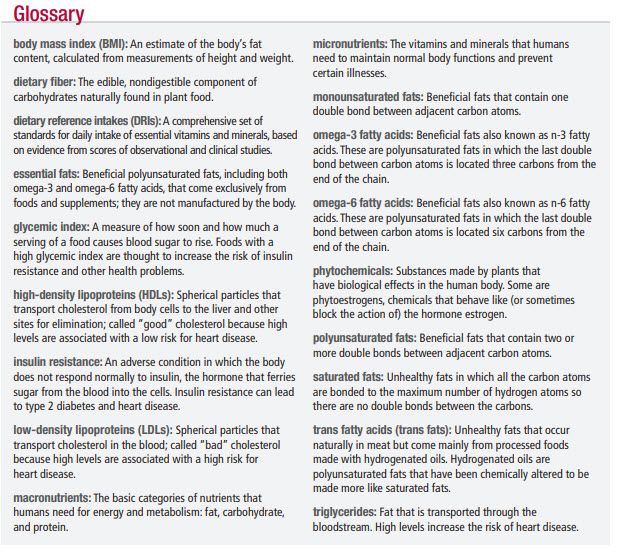
Healthy Eating A guide to the new nutrition. Harvard Health Publications P.O. Box 9306 Big Sandy, TX 75755-9306.
ISBN 978-1-935555-57-5 SU10900
Reference and further reading
15 Common Keto Diet Side Effects to Be Aware of Before You Go Low Carb
https://www.prevention.com/weight-loss/diets/g21764082/keto-diet-side-effects/
Do ketogenic diets really suppress appetite? A systematic review and meta-analysis
https://pubmed.ncbi.nlm.nih.gov/25402637/
Ketogenic diet: Is the ultimate low-carb diet good for you?
Should you try the keto diet?
https://www.health.harvard.edu/staying-healthy/should-you-try-the-keto-diet
What’s a Ketogenic Diet?
https://www.webmd.com/diet/ss/slideshow-ketogenic-diet
Ketogenic Diet
https://www.diabetes.co.uk/keto/
What to eat on a ketogenic diet
https://www.diabetes.co.uk/keto/foods-to-eat-on-a-ketogenic-diet.html
Ketogenic diet
https://epilepsysociety.org.uk/ketogenic-diet
Ketogenic diet: an overview (GOSH)
https://www.gosh.nhs.uk/medical-information/procedures-and-treatments/ketogenic-diet
Ketogenic Diet for Obesity: Friend or Foe?
https://www.ncbi.nlm.nih.gov/pmc/articles/PMC3945587/
What is the Ketogenic Diet?
https://www.eatright.org/health/weight-loss/fad-diets/what-is-the-ketogenic-diet
What is keto, and how is it different from "low carb"?
https://examine.com/supplements/keto/
The Ketogenic Diet: A Detailed Beginner’s Guide to Keto
https://www.healthline.com/nutrition/ketogenic-diet-101
Ketogenic Diet Plan and Detailed Guide for Beginners
https://www.realsimple.com/health/nutrition-diet/ketogenic-diet
16 Foods to Eat on a Ketogenic Diet
https://www.healthline.com/nutrition/ketogenic-diet-foods
55 Easy Keto Recipes
https://www.tasteofhome.com/collection/keto-diet-recipes/
7 Dangers of Going Keto
https://www.health.com/weight-loss/keto-diet-side-effects
HIGH FAT, HIGH CONTROVERSY: THE KETOGENIC DIET
https://wou.edu/chemistry/courses/chemistry-corner/biochemistry-bites/the-ketogenic-diet/
What is a keto diet? BBC
How do low-carb keto diets work, and what do ketosis and ketones mean?
We look at their efficiency for weight loss and the potential side effects.
https://www.bbcgoodfood.com/howto/guide/what-ketogenic-diet
Ketogenic diets: What the science says
https://nutrition.org/ketogenic-diets-what-the-science-says/
Ketogenic, intermittent fasting diets may be heart-healthy
Ketogenic diet: What are the risks?
Keto Diet Recipes
https://www.allrecipes.com/recipes/22959/healthy-recipes/keto-diet/
Ketogenic diet
https://www.healthdirect.gov.au/ketogenic-diet
Keto in a Nutshell
What the Hell is a Ketogenic Diet?
https://www.reddit.com/r/keto/wiki/keto_in_a_nutshell
The Ketogenic Diet: Evidence for Optimism but High-Quality Research Needed
The Journal of Nutrition, Volume 150, Issue 6, June 2020, Pages 1354–1359
https://academic.oup.com/jn/article/150/6/1354/5673196
What Is the Origin of the Ketogenic Diet?
https://www.dietdoc.com/diet-tips/ketogenic-diet-origin/
Ketogenic Diet and Aging
https://www.news-medical.net/health/Ketogenic-Diet-and-Aging.aspx
Ketosis and the Keto Diet
https://www.news-medical.net/health/Ketosis-and-the-Keto-Diet.aspx


















[…] She tried to eat healthily, but her diet wasn’t the best. She would down muffins and coffee for breakfast, maybe a salad for lunch – but she couldn’t seem to wean herself from sugar, eating cakes, ice-creams, sweets, diet sodas, and other junk foods and she was also overweight. […]